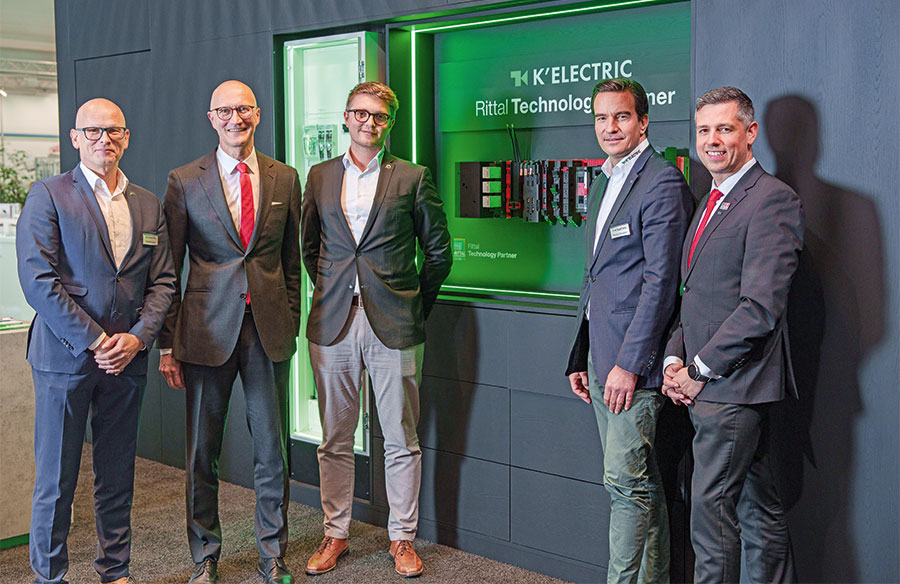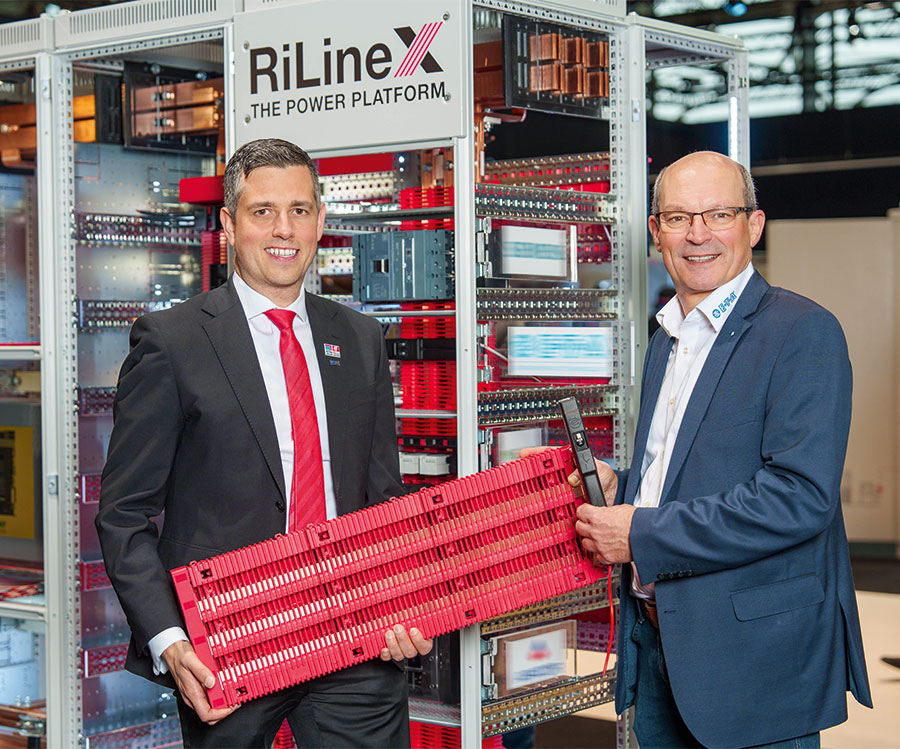Text STEFFEN MALTZAN ––– Photography
Our customers need more and more speed, combined with a high level of flexibility – and that need is something many different applications have in common,” says Raphael Görner, Executive Vice President of Energy & Power Solutions at Rittal. “We therefore need to look beyond our own development processes. To achieve speed through standardisation and wide-ranging innovations, collaboration between companies is a must,” he continues. That’s why, right from the start, Rittal designed its new platform as an open ecosystem that would enable innovative manufacturers to develop and sell “Ready for RiLineX” components that can be connected directly to the 60 mm busbar system.
AC/DC ROCKING WORLDWIDE WITH PARTNERS
K’ELECTRIC and E-T-A are two partners specialising in different technology. “These manufacturers are established experts in direct current (DC) and alternating current (AC), and we have them on board for our customers now,” Görner explains.
K’ELECTRIC, which is based in the German city of Bayreuth, develops and sells switch-disconnectors, lightning and surge protection, and digital measurement technology, which is primarily used in AC environments. “We’re a smaller supplier – and we make a point of turning that to our advantage. We can work closely with our customers and partners and build their ideas and suggestions into our developments faster – and that applies for Rittal, too,” says Philipp Stöcklein, who is the key account manager for technical building equipment and energy suppliers at K’ELECTRIC. The result is exceptionally compact components for the high packing densities of modern systems – components that can now be installed on the board faster than ever thanks to the new contact design. The partners are expecting the high level of international distribution of RiLineX to produce a snowball effect. “Thanks to the suggestions from the Eplan Data Portal and the RiPower configuration software, planners and design engineers will be able to discover the benefits of the ingenious K’ELECTRIC components more easily, even if these aren’t in circulation on their markets yet,” Görner predicts.
DIRECT CURRENT FOR THE INDUSTRIAL AUTOMATION OF THE FUTURE
Direct current is not only distributed in battery storage systems and photovoltaic installations. In more and more industrial applications, power reaches the machine via stable direct current networks. This eliminates losses from current conversion, and battery storage systems and photovoltaic installations can be integrated into the energy flow more effectively.
As a global market leader in circuit protection devices and overcurrent protection, E-T-A Elektrotechnische Apparate GmbH – a protection equipment specialist based in Altdorf in Germany – brings many years of experience in direct current to the ecosystem. “In terms of switchgear and components, DC systems have different needs, in relation to arc quenching, for instance,” explains Richard Mehl, Head of Division Communication & Systems at E-T-A. “Always considering direct current and, above all, enabling easy change-overs was important to us, both for the partner network and the electromechanical platform product development,” Görner emphasises. “What’s more, E-T-A also offers customers excellent technological flexibility and, as a result, futureproofing, too. Depending on the application, E-T-A provides protection for expensive equipment in the mechanical engineering sector and process industry – in the form of either conventional electromechanical solutions or smart, selective protection systems.”

